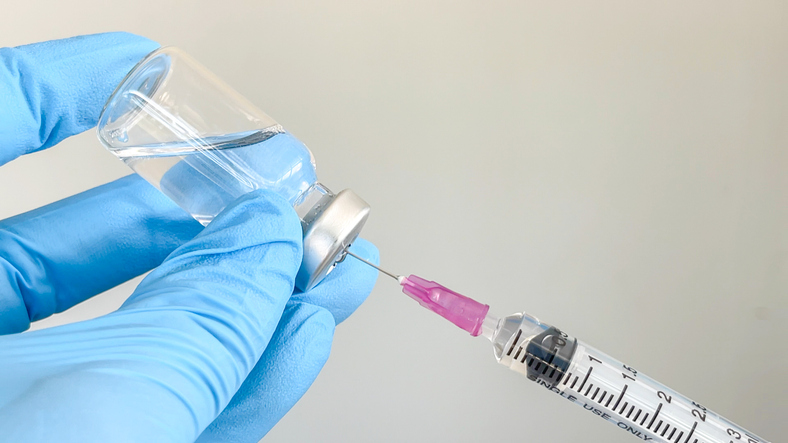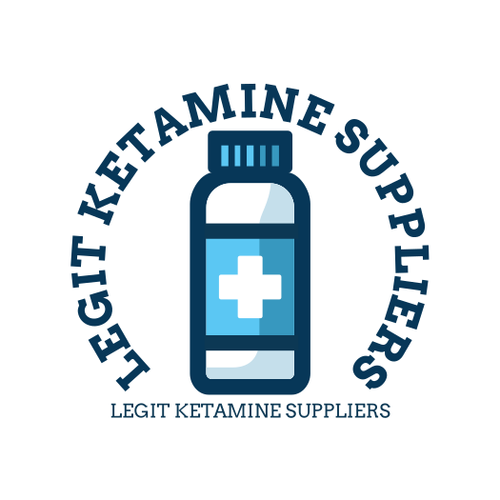Ketamine for PTSD: A Breakthrough Treatment Option

Post-Traumatic Stress Disorder (PTSD) affects millions of people worldwide, leaving them grappling with intrusive thoughts, flashbacks, and emotional numbness. Ketamine for PTSD, While traditional treatments like therapy and medication help some individuals, many continue to struggle. Enter ketamine therapy for PTSD—an innovative approach that is transforming the way we address trauma-related disorders.
This article explores the benefits, process, and considerations of using ketamine for PTSD, including keywords like “is ketamine FDA approved for PTSD,” “ketamine for complex PTSD,” and “ketamine for PTSD side effects.”
What Is PTSD and Why Can It Be Difficult to Treat?
PTSD is a mental health condition triggered by experiencing or witnessing a traumatic event. Symptoms include:
- Intrusive memories or flashbacks
- Avoidance of trauma reminders
- Negative changes in mood and cognition
- Hypervigilance and difficulty relaxing
While psychotherapy (like CBT or EMDR) and medications (like SSRIs) are effective for some, up to 30% of patients experience treatment-resistant PTSD. This is where ketamine therapy for PTSD offers new hope.
How Does Ketamine Therapy for PTSD Work?
Ketamine acts on the brain in unique ways, making it particularly effective for PTSD:
- Glutamate Regulation:
Ketamine targets the glutamate system, unlike traditional treatments that focus on serotonin. This helps create new neural connections and pathways to improve emotional regulation and memory processing. - Rapid Relief:
Many patients notice a reduction in PTSD symptoms within hours or days of their first ketamine infusion. - Disruption of Fear Circuits:
Ketamine reduces the overactivity in brain regions like the amygdala, which is responsible for fear responses. - Neuroplasticity:
By promoting neuroplasticity, ketamine helps the brain heal and adapt to trauma, fostering resilience and long-term recovery.
Ketamine for Complex PTSD
Complex PTSD (C-PTSD), often caused by prolonged exposure to trauma, presents additional challenges due to its deeply ingrained emotional and behavioral patterns. Traditional therapies may fall short, but ketamine offers unique benefits:
- Helps break negative emotional loops
- Encourages self-reflection during ketamine sessions
- Supports integration therapy to address deep-rooted trauma
For those with complex PTSD, ketamine therapy combined with psychotherapy can create a more holistic path to healing.
Is Ketamine FDA-Approved for PTSD?

The direct answer is no, ketamine is not yet FDA-approved for PTSD. However:
- Off-Label Use: Many clinics use ketamine legally and effectively for PTSD as an off-label treatment. This is common in medical practice.
- Spravato (Esketamine): The FDA has approved Spravato, a ketamine-derived nasal spray, for treatment-resistant depression. It is often used for patients with PTSD who also have depression.
While ongoing research is evaluating ketamine’s efficacy specifically for PTSD, current results are promising, and many professionals are advocating for expanded FDA approval.
Ketamine for PTSD Treatment: What to Expect
If you’re considering ketamine treatment for PTSD, here’s what the process typically involves:
1. Initial Consultation
- A healthcare provider will evaluate your medical history, symptoms, and treatment goals to determine if ketamine therapy is right for you.
2. The Infusion Session
- Ketamine is administered intravenously (IV) in a controlled medical setting. Sessions last about 40–60 minutes.
- You may experience a mild dissociative state or dreamlike sensations, which can help you process trauma from a different perspective.
3. Post-Treatment Monitoring
- After the infusion, you’ll be observed for any immediate side effects. Most patients feel calm and relaxed after the session.
4. Follow-Up and Integration Therapy
- To maximize benefits, many clinics offer integration therapy, where a therapist helps you process insights gained during the ketamine experience.
Ketamine for PTSD Side Effects
While ketamine is generally safe when administered by professionals, there are potential side effects:
- Mild Dissociation: Temporary feelings of detachment or unreality during and shortly after treatment.
- Nausea or Vomiting: Typically managed with anti-nausea medication.
- Dizziness or Fatigue: Often subsides within a few hours.
- Elevated Blood Pressure: Monitored during treatment and usually not a concern for healthy individuals.
Long-term side effects are rare when used as prescribed in a clinical setting.
The Benefits of Ketamine Therapy for PTSD
Patients report several advantages to ketamine treatment:
- Rapid Symptom Relief: Particularly for those with suicidal ideation or severe distress.
- Improved Emotional Processing: Helps patients confront trauma in a safe, reflective state.
- Reduction in Hypervigilance: Many report feeling calmer and less reactive to triggers.
- Enhanced Quality of Life: Improved sleep, relationships, and overall functioning.
How to Access Ketamine Treatment for PTSD
When searching for “ketamine therapy for PTSD” or “ketamine treatment for PTSD,” it’s important to find a reputable clinic. Look for:
- Experienced Providers: Ensure the clinic is staffed by licensed professionals trained in ketamine therapy.
- Personalized Care: Clinics should tailor treatment plans to your specific needs.
- Follow-Up Support: Integration therapy or counseling enhances the effectiveness of ketamine.
- Cost Transparency: Discuss pricing upfront. Costs for ketamine infusions typically range from $350–$800 per session. Ketamine for Chronic Pain
FAQs About Ketamine for PTSD
1. How Long Do the Effects of Ketamine Last?
Relief from symptoms can last several weeks to months, with booster sessions extending the benefits.
2. Is Ketamine Safe for Everyone?
Ketamine is generally safe for most adults. However, individuals with certain conditions (e.g., uncontrolled high blood pressure, active substance use disorders) may not be candidates.
3. Can I Combine Ketamine with Other Treatments?
Yes! Many patients combine ketamine with traditional therapy or medications to achieve better results.
4. How Many Sessions Are Needed?
A typical course involves 4–6 initial infusions over 2–3 weeks, followed by maintenance treatments as needed.
Take the First Step Toward Healing with Ketamine
Ketamine therapy is revolutionizing the treatment of PTSD and offering hope to those who feel trapped by their trauma. Whether you’re seeking relief from treatment-resistant symptoms, exploring options for complex PTSD, or simply curious about this groundbreaking therapy, ketamine may be the solution you’ve been searching for. ketamine for complex ptsd
If you’re ready to explore “ketamine treatment for PTSD” or learn more about local clinics, reach out to a qualified provider near you. Healing is possible, and it starts with taking that first step.
Diving Deeper into Ketamine for PTSD Treatment
Ketamine is rapidly gaining recognition as a groundbreaking treatment for Post-Traumatic Stress Disorder (PTSD). Its unique properties and mechanism of action have positioned it as a promising option for those who struggle with traditional therapies. Below, we delve further into the science, application, and evolving role of ketamine in PTSD treatment. Ketamine for Bipolar
How Ketamine Differs from Traditional PTSD Treatments

Traditional PTSD treatments often involve a combination of psychotherapy (like CBT or EMDR) and medications, such as selective serotonin reuptake inhibitors (SSRIs). While these methods can be effective, they work slowly, and not everyone benefits. Ketamine provides an alternative with significant advantages:
- Faster Onset:
Ketamine works within hours, compared to the weeks or months required for antidepressants to take effect. - Alternative Mechanism:
Ketamine bypasses serotonin pathways and instead modulates the glutamate system, which is directly involved in learning, memory, and emotional regulation. - Effectiveness for Treatment-Resistant PTSD:
Ketamine offers relief for patients who have not responded to other treatments, opening a path to recovery for those who previously felt hopeless.
Ketamine’s Role in Emotional Processing
One of the most remarkable aspects of ketamine therapy is its ability to help patients process trauma without the overwhelming emotional charge often associated with revisiting painful memories. During treatment, many patients experience: ketamine infusions for ptsd
- Emotional Clarity:
The dissociative effects of ketamine create a safe mental space for reflecting on trauma without becoming emotionally overwhelmed. - Increased Insight:
Patients often report newfound perspectives on their experiences, allowing them to reframe and contextualize traumatic events. - Enhanced Therapy Integration:
When combined with psychotherapy, ketamine facilitates deeper engagement and progress, making talk therapy more effective.
Exploring Ketamine for Complex PTSD (C-PTSD)
Complex PTSD, resulting from prolonged or repeated trauma, often involves symptoms beyond those of standard PTSD, such as:
- Chronic feelings of shame or guilt
- Difficulty trusting others or forming relationships
- Persistent negative self-perception
Ketamine’s ability to disrupt deeply entrenched thought patterns makes it a valuable tool for treating complex PTSD. By creating a dissociative state, ketamine allows patients to access buried memories and emotions in a less threatening way, paving the way for profound healing. spravato treatment near me
What the Research Says About Ketamine for PTSD
The growing body of research on ketamine for PTSD highlights its potential as a transformative treatment. Key findings include:
- Rapid Reduction in Symptoms:
Studies show that a single ketamine infusion can significantly reduce PTSD symptoms within 24 hours, with effects lasting up to a week or more. - Improved Emotional Regulation:
Ketamine helps calm hyperactive fear circuits in the brain, reducing hypervigilance and emotional reactivity. - Synergy with Therapy:
When combined with psychotherapy, ketamine enhances emotional insight and helps patients integrate their experiences into a coherent narrative.
While more research is needed, ongoing clinical trials are likely to solidify ketamine’s role in PTSD treatment and expand its availability. ketamine treatment for ptsd near me
Considerations for Ketamine Therapy
Before beginning ketamine therapy, it’s essential to consider several factors:
Safety
Ketamine is generally safe when administered in a controlled medical setting. However, it may not be suitable for individuals with certain conditions, such as:
- Uncontrolled hypertension
- Severe substance use disorders
- History of psychosis
Side Effects
Most side effects are mild and temporary, including:
- Dissociation
- Nausea
- Dizziness
- Fatigue
Clinics monitor patients closely to ensure safety and manage side effects.
Long-Term Use
While ketamine is effective, it’s not a standalone cure. Ongoing therapy, lifestyle changes, and possibly maintenance infusions are often needed to sustain results. Ketamine For Anxiety
The Future of Ketamine for PTSD
The field of ketamine therapy is evolving rapidly, with new advancements and applications on the horizon:
- Expanded FDA Approvals:
While ketamine is not yet FDA-approved specifically for PTSD, the growing evidence may lead to expanded indications, making it more accessible. - Combination Therapies:
Researchers are exploring how ketamine can be combined with emerging therapies, like MDMA-assisted therapy, for even greater effectiveness. - Personalized Treatment Plans:
Advances in neuroscience and genetics may lead to highly tailored ketamine protocols based on individual needs.
Getting Started with Ketamine Therapy for PTSD
If you’re ready to explore ketamine for PTSD, here’s how to begin:
- Research Clinics: Search for reputable clinics using terms like “ketamine therapy for PTSD near me” or “ketamine infusion clinics near me.”
- Consult a Specialist: Discuss your medical history and treatment goals with a qualified provider.
- Understand Costs and Coverage:
While ketamine is often an out-of-pocket expense, some insurance plans cover Spravato or therapy sessions. Ketamine for Depression - Prepare for Treatment: Follow pre-treatment guidelines, and ensure you have a support system in place for post-treatment integration.
Final Thoughts
Ketamine therapy is reshaping the landscape of PTSD treatment, offering hope to those who have long struggled with trauma. Whether you’re dealing with treatment-resistant symptoms or seeking an alternative to traditional approaches, ketamine provides a scientifically backed, innovative option for healing.
By partnering with a qualified provider and integrating ketamine into a comprehensive treatment plan, you can take meaningful steps toward reclaiming your life from PTSD. Healing is possible, and ketamine may be the key to unlocking it. Viking Pool Cues
Let us know if you’d like help finding specific clinics, resources, or clinical trials in your area!


